By Kirsten Held, Division of Forestry Outreach Specialist
For more than a century, partnerships have been at the heart of our work to conserve and protect Wisconsin forests. One of those valued partnerships is with the National Association of State Foresters (NASF). Established in 1920, NASF is a non-profit organization composed of the directors of forestry agencies in the states, U.S. territories, and the District of Columbia. To celebrate the centennial of this national partner, the Wisconsin DNR-Division of Forestry will be posting 100 articles on this site throughout 2020 noted with #NASF100.
While Wisconsin may be best known for leading the nation in the production of specialty cheeses, the Wisconsin DNR-Division of Forestry is most proud of the many ways that forests make our state such a great place to live and visit as well as Wisconsin’s leadership in sustainable forestry.
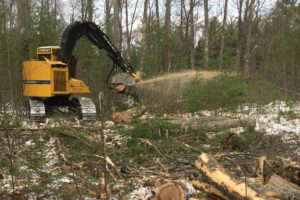
Processor Cutting Red Oak
For example, Wisconsin leads the nation in the value of forest product shipments, and for more than six decades, has led the nation in paper production. Wisconsin leads the nation in implementing third-party certification standards and nearly 7.5 million acres of forest land in Wisconsin are third-party certified today, providing independent assurance that the forests are being managed sustainably. We’re also among the top states with communities earning Tree City USA status in recognition for investments in their urban forests.
Throughout the year, these 100 posts will explore various Wisconsin forestry programs, projects and partnerships working together to keep Wisconsin forests working. Each month we’ll showcase a forestry career, property and one of Wisconsin’s common trees. We’re starting this year-long Wisconsin forestry journey with water-related posts as Wisconsin wraps up the Year of Clean Drinking Water and begins the 25th year of our Forestry Best Management Practices for Water Quality. After we explore the relationship between forests and water in January, in February we’ll look at the current status of Wisconsin forests (spoiler alert: our forests are growing in volume every year).
We hope you enjoy journeying with us as we explore Wisconsin’s rich forest resources – from the expansive Northwoods to the tree-lined avenues of Milwaukee – and the wealth of benefits they provide.
 The history of the Wisconsin DNR Urban Forestry program is closely tied to the history of urban forestry in the United States. Although the term ‘urban forestry’ did not come into use until 1965, the concept of an integrated approach to the management of the urban forest ecosystem began to take shape as early as the 1930s. The devastation caused by diseases such Dutch elm disease, phloem necrosis, and oak wilt was a driving force in the development of the field of urban forestry. The term ‘urban forestry’ was first used in 1965 at the University of Toronto to describe a graduate student’s research on the successes and failures of municipal tree planting projects in Toronto. The term was quickly adopted in the United States, where urban forestry had already begun to grow into a national movement. (Source: Mark Johnston, “A Brief History of Urban Forestry in the United States,” Arboricultural Journal 1996, Vol. 20, pp. 257-278.)
The history of the Wisconsin DNR Urban Forestry program is closely tied to the history of urban forestry in the United States. Although the term ‘urban forestry’ did not come into use until 1965, the concept of an integrated approach to the management of the urban forest ecosystem began to take shape as early as the 1930s. The devastation caused by diseases such Dutch elm disease, phloem necrosis, and oak wilt was a driving force in the development of the field of urban forestry. The term ‘urban forestry’ was first used in 1965 at the University of Toronto to describe a graduate student’s research on the successes and failures of municipal tree planting projects in Toronto. The term was quickly adopted in the United States, where urban forestry had already begun to grow into a national movement. (Source: Mark Johnston, “A Brief History of Urban Forestry in the United States,” Arboricultural Journal 1996, Vol. 20, pp. 257-278.)
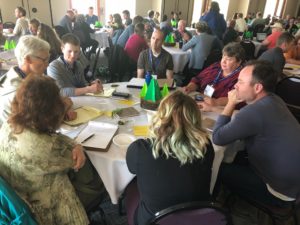 The Urban Forestry Team provides guidance, training, information, funding and professional connection opportunities to municipal foresters and other professionals to achieve sustainable urban forestry management. In a (hickory) nutshell, our work falls into the following five categories:
The Urban Forestry Team provides guidance, training, information, funding and professional connection opportunities to municipal foresters and other professionals to achieve sustainable urban forestry management. In a (hickory) nutshell, our work falls into the following five categories: “What is it about this place?” I wondered. “Why does this city feel so harsh, so disheartening?”
“What is it about this place?” I wondered. “Why does this city feel so harsh, so disheartening?”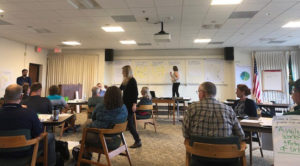
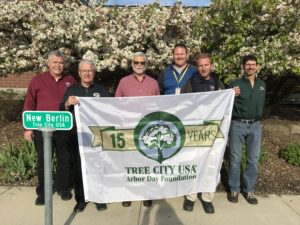
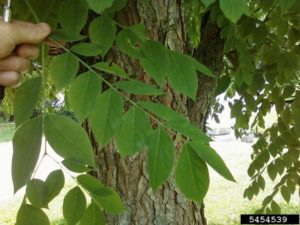

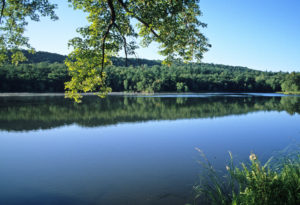
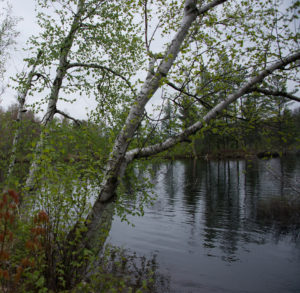
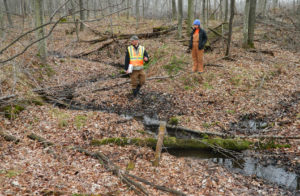 hydrologists – monitor our state’s water quality before, during and after forests are harvested. One is Nolan Kriegel. Through his work in safeguarding one of our major sources of clean water, he serves us all in this important job.
hydrologists – monitor our state’s water quality before, during and after forests are harvested. One is Nolan Kriegel. Through his work in safeguarding one of our major sources of clean water, he serves us all in this important job.